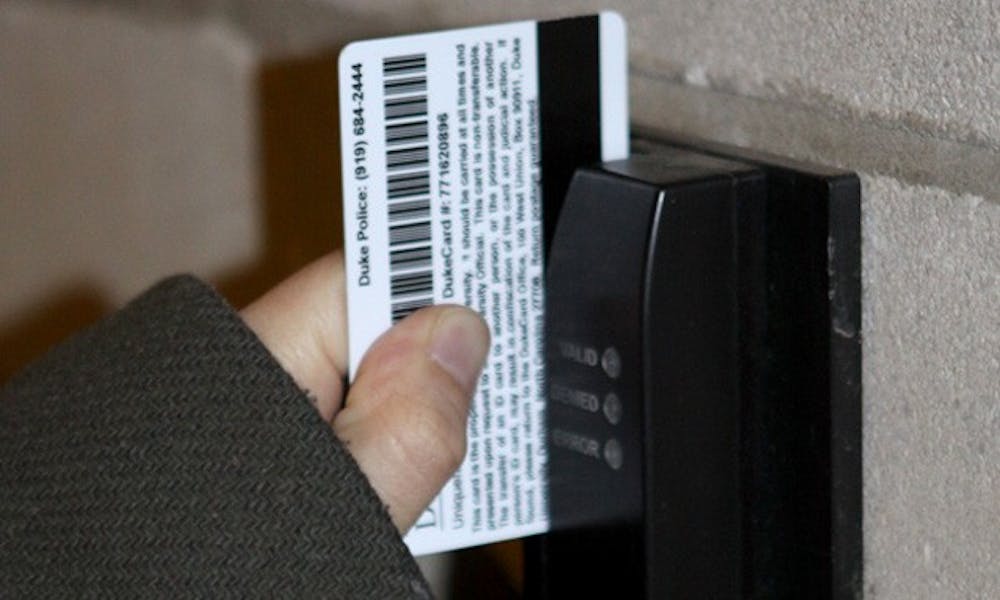Due to a rise in safety concerns, Duke University Libraries are closing their doors to the public two hours earlier, starting Jan. 23.
Administrators have further limited public access to the libraries because of increased incidents of crime caused by visitors unaffiliated with the University. Previously, library doors switched to DukeCard access only at 9:00 p.m., and now they will lock to non-DukeCard holders at 7:00 p.m., said Aaron Welborn, director of communications for Duke Libraries. This change will apply to Perkins, Bostock and Rubenstein Libraries on West Campus, as well as Lilly and the Music Libraries on East Campus. The double-door entrances under the Bostock bridge will require card access 24 hours a day.
Duke University Police Department and library administrators initiated these changes due to concern over the increased number of incident reports in the libraries from last semester, said Robert Byrd, associate university librarian for collections and user services.
Although DUPD has not yet released its annual crime report for 2011, Byrd said there was an increase of burglary in the library last semester reported by members of the Duke community. He added that other instances of inappropriate use of the library have been cited as well, though said he could not give specific numbers.
“The hope is that this change will deter the public unaffiliated with the University from coming in and misusing the library with the [new] closing time,” Welborn said.
Byrd mentioned that DUPD deals with reports of theft at the libraries on almost a daily basis, and the most common stolen items are laptops and cell phones.
Duke Student Government President Pete Schork, a senior, said that although the changes to library access were driven by DUPD and the libraries, students were consulted in the process. He added that DSG supports the earlier onset of card access restrictions provided that it gives adequate access to members of the outside community.
“It seems like a justified change, and we are sensitive to try to not inconvenience students,” Schork said. “Given that students have their [DukeCards] on them all the time, it should not be an inconvenience.”
Byrd also explained that this change is the initial step to increasing safety in the libraries.
“The problem is that at most other institutions, there is one entrance to the library, which can be well monitored” Byrd said, “Duke has multiple, as part of the open and accessible campus, so it is harder to control and know who goes in and leaves and when.”
Further steps to increasing safety could possibly include setting up two main points of entry—the main Perkins entrance and the double glass doors between Perkins and Bostock. At these entrances, there would be gates inside to control access, which could be guarded from inside, Byrd said.
The efficiency of this plan is still in the research stages, but Byrd noted that with the use of gates, members of the public could obtain free Duke University library cards to use upon entry. If this is possible, it could provide interesting statistics on the library use by those affiliated with the University and the general public as well.
“Right now, we just want the students to come and use the libraries’ resources without having to worry about what others may be doing here,” Byrd said. “It is important that we remain accessible to the public, but the safety of students is also our priority, and that is why we are continuing to develop a new way to keep the Duke libraries available to all.”
Get The Chronicle straight to your inbox
Sign up for our weekly newsletter. Cancel at any time.

